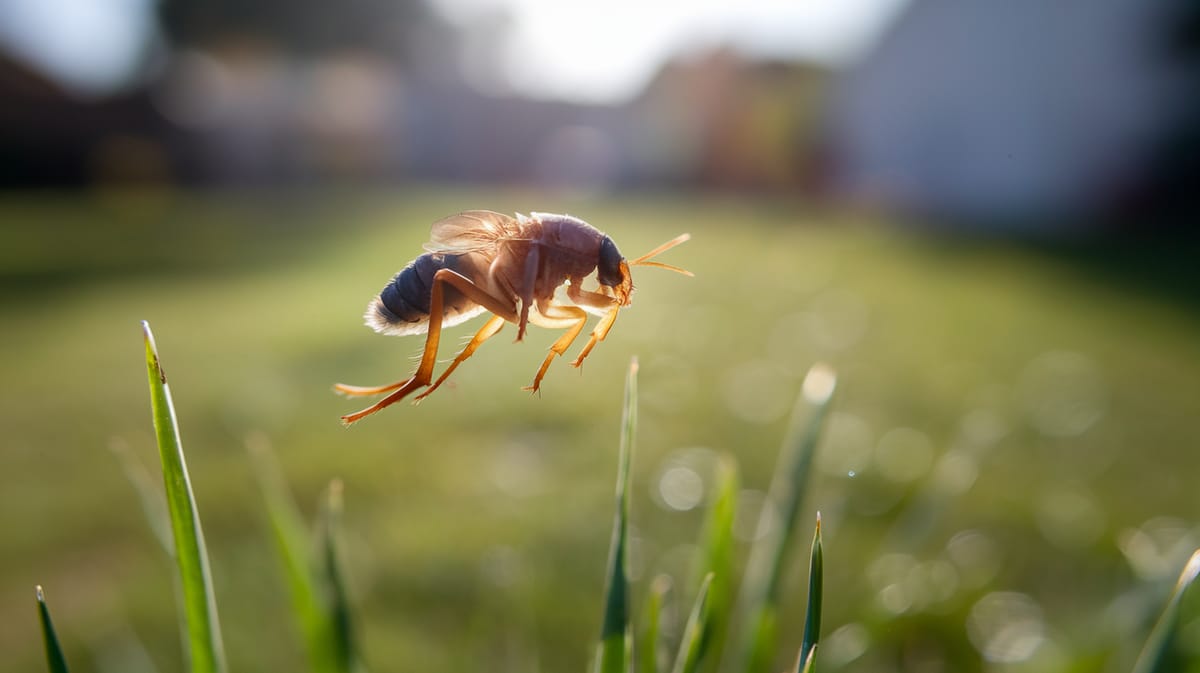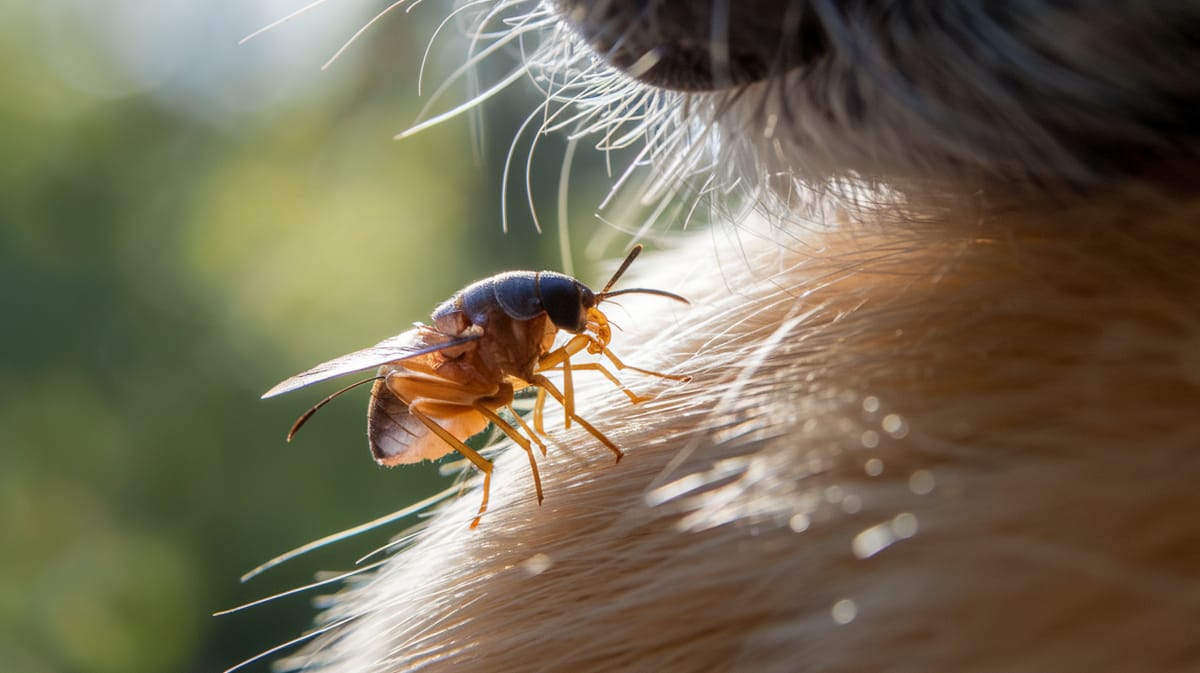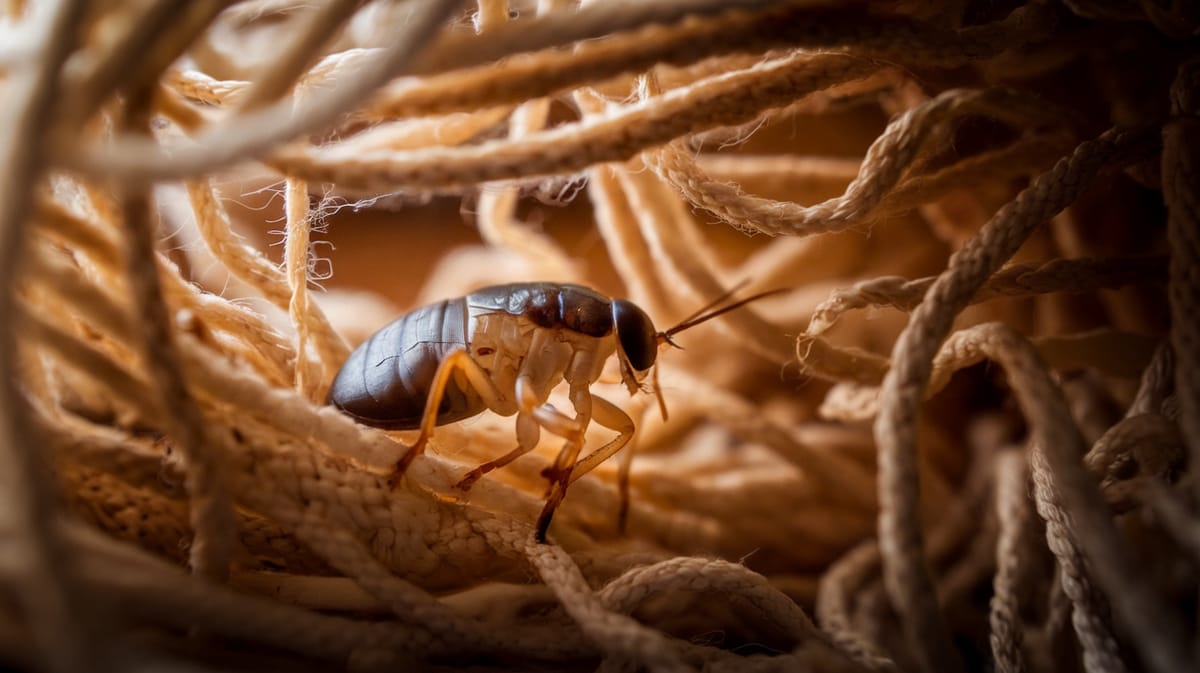Dog Flea
Tiny yet tenacious, the dog flea thrives on adaptability and persistence, jumping great distances to find its host. These fleas play a crucial role in the ecosystem by controlling animal populations.

Key Insights at a Glance
Did You Know?
Taxonomy & Classification
Dog fleas exhibit remarkable adaptability as blood-feeding ectoparasites, expertly navigating the challenges of mammalian hosts with specialized mouthparts and jumping prowess. Let's understand the evolutionary journey and classification of these remarkable parasites.
Global Presence
Dog fleas, belonging to the genus Ctenocephalides, thrive worldwide, affecting various mammalian hosts with significant ecological and veterinary impact.
Ancient Survivors
Originating over 60 million years ago, fleas have adapted through major climatic shifts, evolving unique traits for survival and host interaction.
Lifecycle and Growth
A remarkable journey of transformation from Egg to Adult.
Egg
Tiny, white eggs are laid in the host's environment, often falling into carpets or bedding, ready to hatch into larvae.
Larva
Blind and legless, larvae feed on organic debris, vital for growth before moving to a safe place to pupate.
Pupa
Encased in a cocoon, pupae patiently await the right conditions to emerge as adults, sometimes staying dormant for months.
Adult
Equipped with powerful legs, adults actively seek hosts to feed on blood, crucial for reproduction and survival.
Dietary Habits
A parasitic feeder with specialized adaptations, it extracts nutrients directly from its host's blood, ensuring survival amidst various hosts.
| DIET TYPE | DESCRIPTION |
|---|---|
| Primary Diet | Primarily feeds on the blood of dogs and other mammals, relying on piercing mouthparts for effective feeding. |
| Secondary Diet | Occasionally turns to the blood of cats, rabbits, and wild mammals when primary hosts are unavailable. |
| Occasional | Rarely consumes birds' blood, demonstrating flexibility in host choice under specific environmental pressures. |

Behaviour and Adaptations
Discover the distinct adaptations that make the Dog Flea a formidable survivor.
Jumping Agility
Powerful legs allow rapid jumps, escaping threats and finding hosts easily.
Sensory Detection
Sensitive antennae detect host presence and environmental changes.
Resilience to Starvation
Can survive long periods without a blood meal, enhancing survival.
Ecosystem Impact
Dog Fleas play a vital role in maintaining ecological balance through their interactions within ecosystems.
Nutrient Recycler
Dog Fleas contribute to nutrient cycling by breaking down organic matter.
Prey Base
Serves as a food source for birds and small mammals.
Parasite Population Control
Helps regulate populations of other parasites by competing for hosts.
Conservation Challenges
Understanding and addressing the major threats to Dog Flea populations.
Pesticide Overuse
Excessive pesticide use decreases flea populations and disrupts their ecosystem role.
Habitat Alteration
Changes in urban and rural landscapes reduce flea habitat availability and diversity.
Climate Variability
Temperature fluctuations impact flea breeding and survival, altering their ecological interactions.
Frequently Asked Questions
How long do Dog Flea live?
Dog fleas typically live for about two to three months. Their lifespan can vary depending on environmental conditions and the availability of a host. Adult fleas spend most of their life on a host, feeding and reproducing.
What do Dog Flea eat?
Dog fleas primarily feed on the blood of mammals, especially dogs, but they can also bite humans. Their mouthparts are adapted for piercing skin and sucking blood, which provides them with nutrients necessary for survival and reproduction.
Are Dog Flea poisonous?
Dog fleas are not poisonous, but their bites can cause itching and allergic reactions in both humans and animals. They can also transmit certain diseases and parasites such as tapeworms to pets, making them a health concern.
Are Dog Flea endangered?
Dog fleas are not endangered. They are a common and widespread pest found in various environments, especially where domestic animals like dogs and cats reside. They have a high reproductive rate, which helps maintain their population levels.
What do Dog Flea symbolize?
Dog fleas are often associated with pestilence, annoyance, and discomfort due to their parasitic nature. In literature and culture, they sometimes symbolize persistence and resilience, as they are notoriously difficult to eliminate once they infest an area.
Do Dog Flea bite?
Yes, dog fleas bite. Their bites can cause itching and irritation on the skin of their hosts. In some cases, flea bites can lead to allergic reactions or dermatitis in sensitive individuals, both in humans and pets.
What color are Dog Flea?
Dog fleas are typically reddish-brown in color. Their small, flat bodies are well-suited for moving through the fur of their hosts, making them difficult to spot unless closely examined.
Does a Dog Flea have wings?
No, dog fleas do not have wings. They are wingless insects that rely on their powerful legs to jump significant distances, which allows them to move quickly between hosts and environments.
What does a Dog Flea look like?
Dog fleas are small, about 1-3 mm in length, with flat, reddish-brown bodies. They have long hind legs for jumping and mouthparts adapted for piercing skin and sucking blood. Their bodies are covered with tiny hair-like structures that aid in movement through fur.
Is a Dog Flea an insect?
Yes, a dog flea is an insect. It belongs to the order Siphonaptera, characterized by its wingless, flattened body adapted for a parasitic lifestyle. Like all insects, dog fleas have a three-part body structure: head, thorax, and abdomen.
Related Insects
Discover insects with similar characteristics to Dog Flea - including shared habitats, diets, and taxonomic classifications
Share this profile
Help others discover Dog Flea
